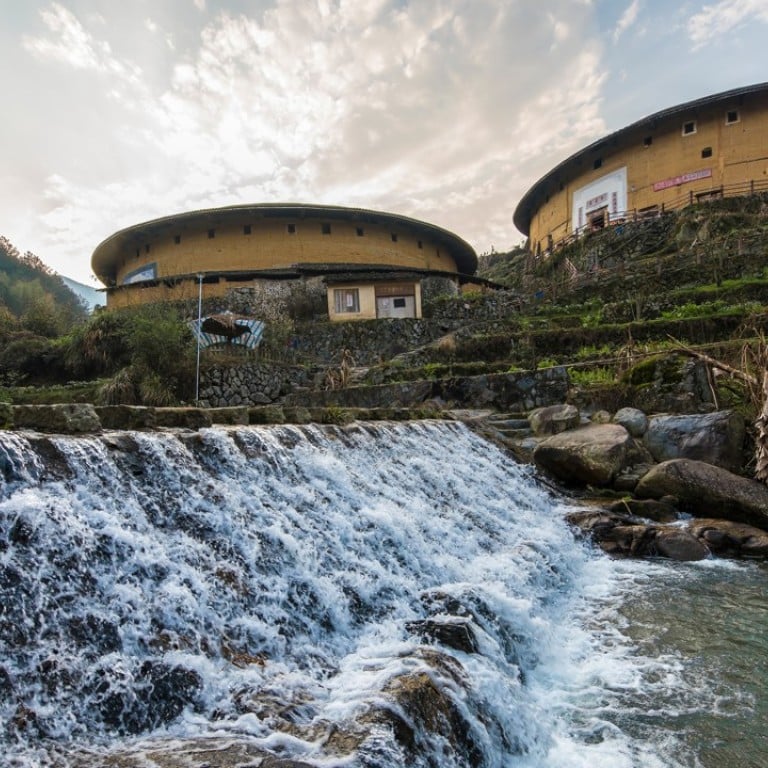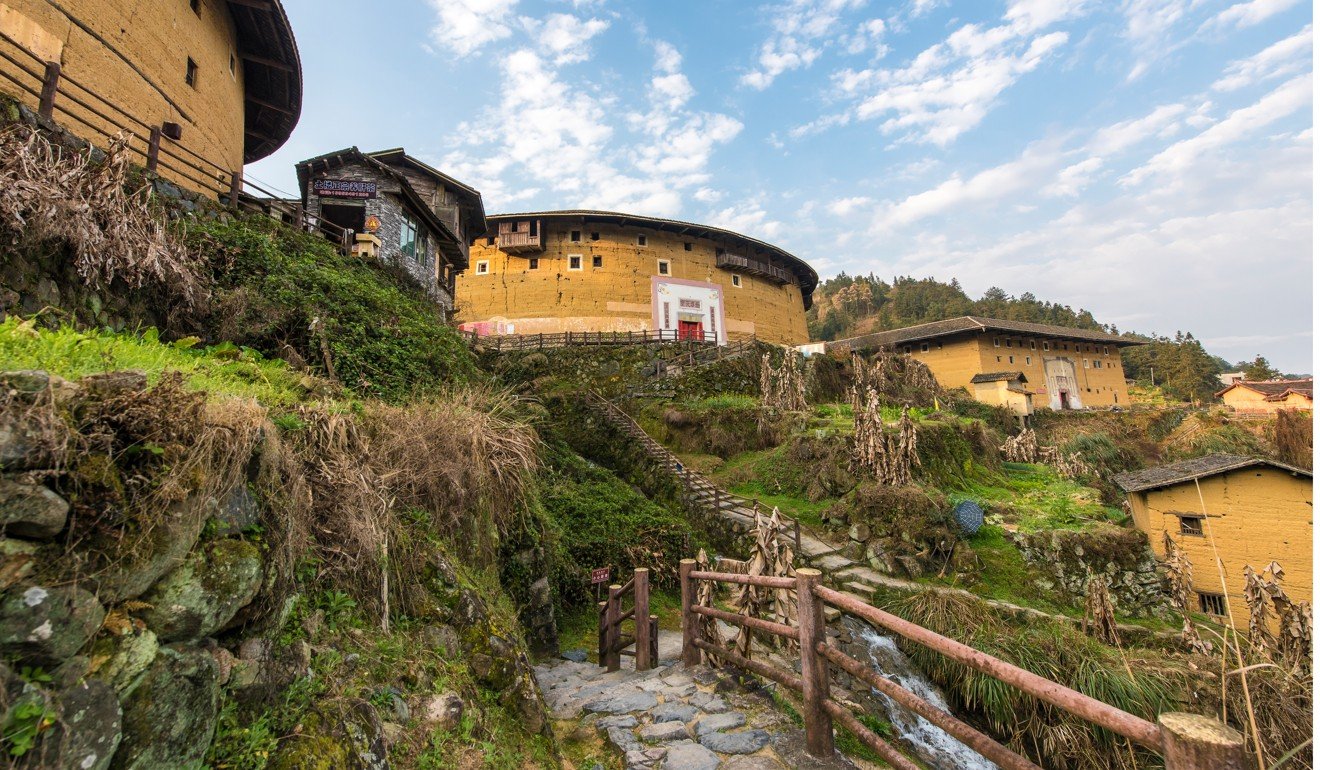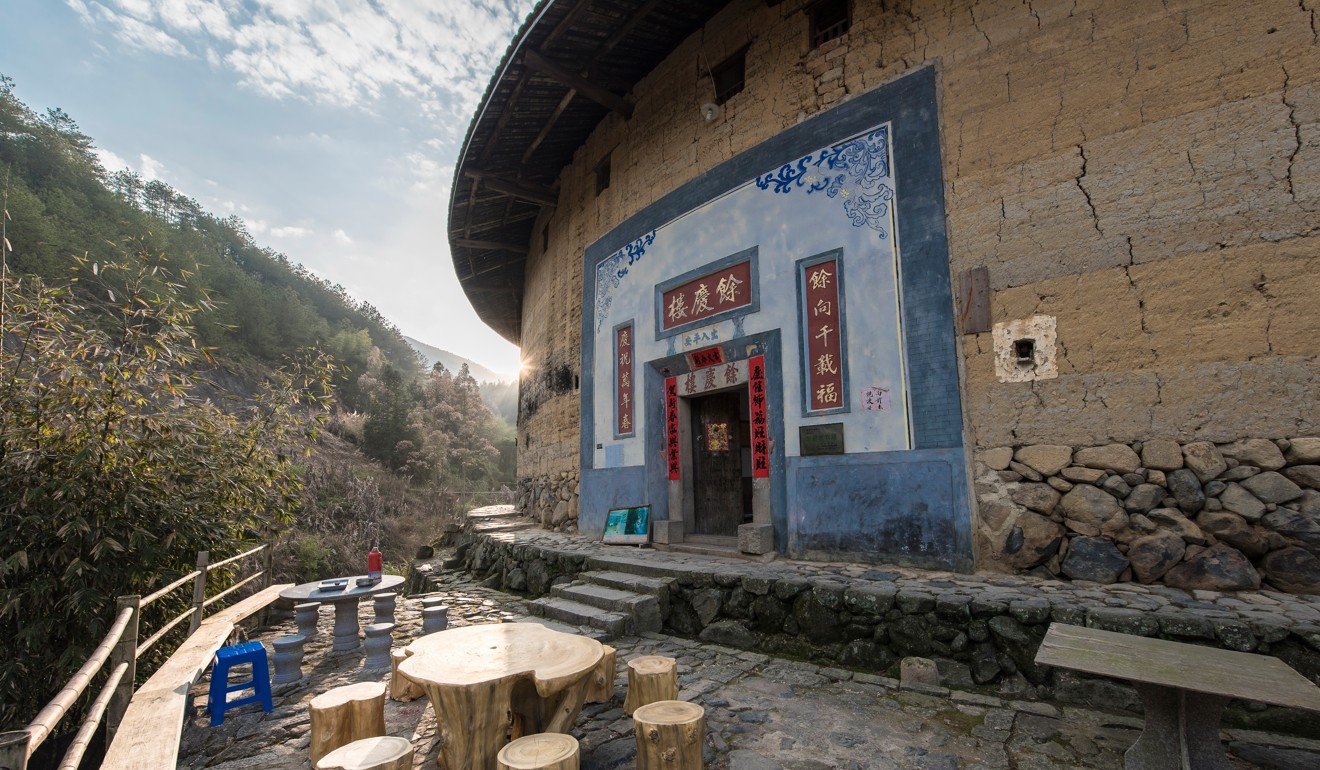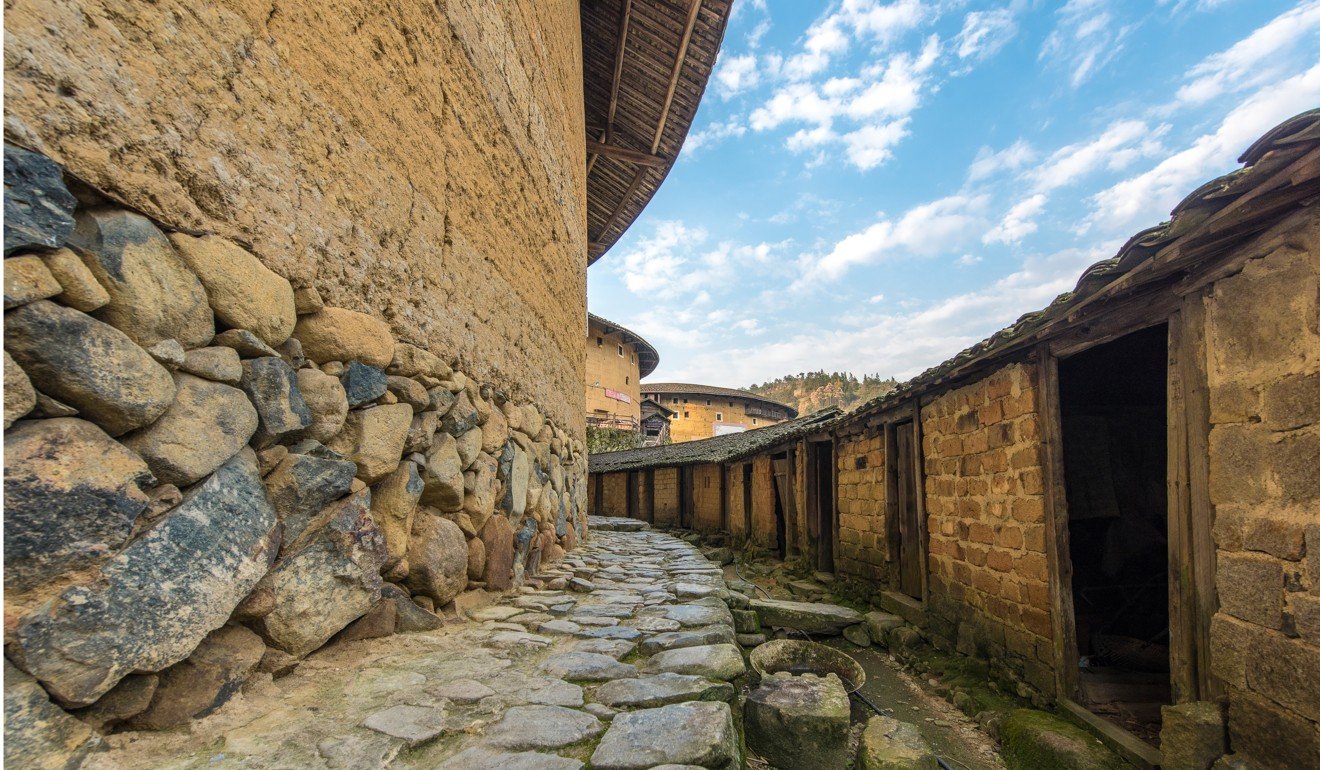
Inside Fujian’s Unesco-listed Hakka roundhouses: their history, architecture and why heritage status is mixed blessing
The earthen buildings in southwest China, called tulou, have become a big tourist draw since many were included in a UN World Heritage Site in 2008. What to expect when you pay a visit and why their new status it is not all good news for villagers
As dusk envelops the village of Xiazai in Yongding district, Fujian province, in southwest China, swallows swoop low over a stream and calm descends as the tourists drift away. The old residents, all members of the Lin clan, while away the evening talking as bats dart between the rafters of the tulou earthen buildings. They reminisce about the old times, lamenting that the village’s youth have all left for the cities.
There are around 3,000 tulou, literally meaning earthen house, spread around the southwestern part of Fujian and the adjoining areas of Guangdong and Jiangxi. While round ones are the most common, there are also square ones and mansion-style (“five phoenix”) buildings.
The perfect Hong Kong weekend break: tranquil Dapeng, Shenzhen - history, hikes, and some of China’s most beautiful beaches
The tulou in Yongding were built by Hakka people who migrated south from the 11th century onwards to escape invasions of Jurchens and later Mongols in the northern area of China. Marginalised to the mountainous regions, they risked attacks by bandits and wild animals.

Communal packed-earth buildings in China date back 6,000 years, but tulou took the style to a whole new level both in scale and sophistication. In 2008, Unesco recognised their importance and gave 46 buildings a World Heritage listing. Three clusters of tulou – Hongkeng, Gaobei and Chuxi – in Yongding district, near the border with Guangdong, account for 21 of them. However, the Lin elders tell me the listing has done little to help them, and tulou in various states of disrepair dot the countryside.
In Xiazai, chickens scrabble in the cracks of one tulou’s uneven courtyard much as they have done for hundreds of years. Around the outside of the building, archaeologists dig with much more vigour in the hope of unearthing something far more exciting than seeds or grubs.

“We’re looking for the old moat and bridge and hope that we can find some Tang dynasty pottery to date the building,” says Zhen Baoyuan from the Fujian Archaeology Unit, after I am introduced to them by my American friend who is studying the impact of tourism on Unesco heritage sites for her PhD.
The building, despite being partly destroyed by fire in the Taiping Rebellion, still houses members of a family surnamed Kong, plus their water buffalo, and is reputed to be one of the oldest in the area.
The Hongkeng cluster of tulou, sprawled along a river valley, is the most visited listed area. Near the village entrance, a tulou called Zhencheng Lou is one of the most ornate. While the layout is based on the traditional Eight Trigrams principle, it was the first to incorporate Western architectural styles, having been built in 1912 at the start of the Republic of China.
Kaiping watchtowers a curious legacy of overseas Chinese wealth
Unesco has inscribed (listed) seven of these large buildings in Hongkeng. Originally they were built to accommodate and protect whole clans. An early form of eco house, they used local materials and terrain to build fortress structures on feng shui principles.
But today in Hongkeng, mass tourism has taken its toll. Navigating the ground floor – the only part open – of Zhengcheng Lou, we dodge the gauntlet of souvenir stands, tea shops and restaurants. It is a similar pattern in the other inscribed buildings, but veering off from the circuit we find ourselves alone in Chaoyang Lou, one of the many tulou in the valley that did not make the list.
Surprised to see two foreign tourists – and perhaps worried by the attention we are showing to her ducks – an old lady strikes up conversation. In thick Fujian dialect she complains that only the owners of inscribed buildings receive any benefit from the entrance fees, and it is up to the residents to maintain buildings such as Chaoyang Lou.

Fuyu Lou, a mansion-type tulou, sits on the banks of the stream. Built in 1880, the imposing building, Unesco inscribed, covers 4,000 square metres and rises to five storeys at the rear. Today it also offers foreigner-friendly accommodation (Changdi Inn in Hongkeng village).
In line with feng shui principles, most tulou face south. Drainage ditches are anything but straight, as it is believed water flowing in straight lines away from the house drains it of wealth and luck. Usually tulou are nestled within the contours of hills and near a stream. Hongkeng is sandwiched by hills, on the narrow level banks of the Hongchuan stream.
In the nearby Gaobei cluster, Chengqi Lou is particularly photogenic (admission 50 yuan). Whereas the courtyards inside many circular tulou are largely empty, here there are decreasing concentric circles of stone buildings leading to an ancestral hall. The sheer scale is breathtaking – especially when you consider that in its heyday around 800 people lived here.

Later, on our way to the Chuxi cluster, I can’t help but feel the Xu clan drew the short straw. Our car climbs on a poor-quality road high into the hills, in the shadow of the Longshangang and Guozidong mountains. This isolated location must have helped keep them safe though, and today means it is the least visited of the listed clusters.
Neither Hongkeng nor Gaobei really show how people traditionally lived or give any history about tulou. In Chuxi, however, Jiqing Lou, the oldest building in all three clusters (built from around 1403) has informative displays about tulou life and Hakka culture. They explain, for example, that Hakka literally means “guest people” (kejia ren in Mandarin), and that existing inhabitants of areas to which the Hakka migrated were often openly hostile to the new arrivals.
The good, bad and ugly sides to a holiday in Yangshuo, in southwest China’s karst country
That is why although the tulou we see today take different forms as a result of development over the centuries, their essence is that of defensive structures to protect the clan inside. As for their circular and square shapes, a sign in Jiqing Lou says this may be to symbolise their inhabitants’ wish for family unity and contentment (in I Ching (the Book of Changes), an ancient Chinese divination text, heaven is represented by a circle while earth is a square).
That night, as I climb into my bed in an old tulou lit by red lanterns, I am certainly content, surrounded by thick earth walls and the sound of a stream gently trickling nearby.
Getting there
Cathay Dragon and Xiamen Airlines operate flights from Hong Kong to Xiamen. Buses from the Hubin Bus Station to Yongding, which is also a prefecture-level city, take 3½ to 5 hours (you can also get off at Hongkeng). Alternatively there are trains from both Xiamen and Guangzhou. The nearest high speed railway station is Longyan.
Getting around
There is a bus from Yongding to the entrance of the Hongkeng cluster. For other sites you will need to arrange transport. This could be done either through Changdi Inn or by hiring one of the taxis around the Yongding bus station. Expect to pay 400 yuan (US$60) a day.

